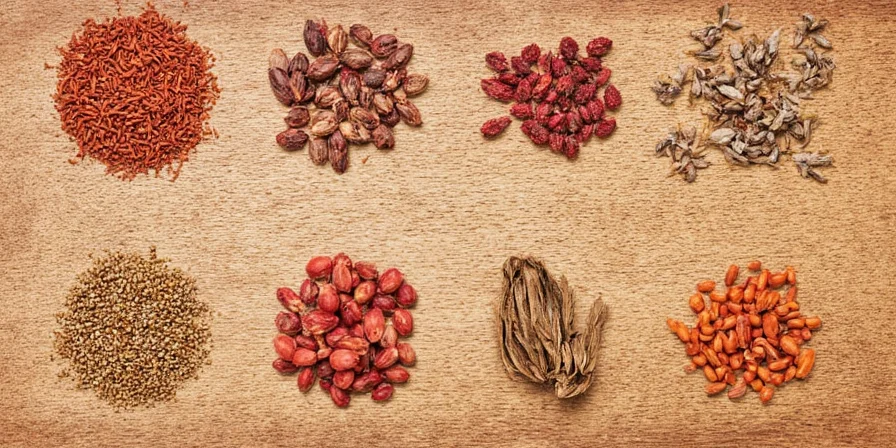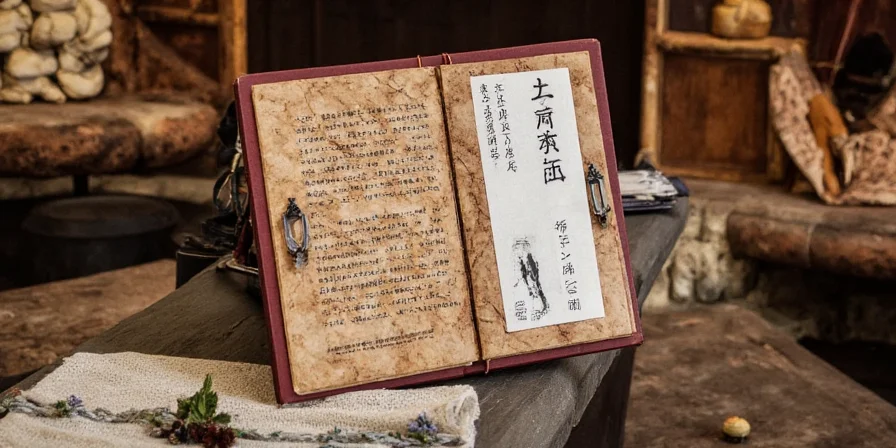If you've ever stood confused in the spice aisle wondering which pepper to choose for your pasta, stir-fry, or salsa, this guide solves your problem immediately. Based on culinary science and professional chef techniques, you'll discover exactly which pepper varieties work best for your cooking needs - including heat levels, flavor profiles, and practical substitution guides you can use tonight.
Quick Reference: Top 8 Pepper Varieties Compared
Before diving deeper, here's what you need to know right now about the most common peppers:
| Pepper Type | Heat Level | Best For | Substitute If Unavailable |
|---|---|---|---|
| Black Pepper | Mild warmth | All-purpose seasoning | White pepper (in light dishes) |
| Jalapeño | Moderate heat | Salsas, nachos, pickled dishes | Serrano (hotter) or poblano (milder) |
| Habanero | Very hot | Fruit-based sauces, Caribbean dishes | Scotch bonnet (similar heat) or serrano (milder) |
| Bell Pepper | No heat | Stir-fries, stuffing, raw applications | Poblano (mild heat alternative) |
| Ghost Pepper | Extreme heat | Specialty hot sauces only | Habanero (significantly milder) |
The Science Behind Pepper Heat (Simplified for Practical Cooking)

Understanding pepper heat isn't complicated when you know these two key facts: 1. Black pepper (Piper nigrum) creates warmth through piperine - it's not measured on Scoville scale 2. Chili peppers (jalapeños, habaneros) create burning sensation through capsaicin - measured in Scoville Heat Units (SHU) This explains why milk stops chili heat but barely affects black pepper - they work through different biological pathways. Keep this in mind when substituting peppers in recipes.
Black Pepper: Your Kitchen's Essential Workhorse

Forget pre-ground shakers - fresh cracked black pepper transforms ordinary dishes. The key difference most home cooks miss: piperine (black pepper's active compound) degrades within 30 minutes of grinding. For maximum flavor:
- Always grind fresh just before serving
- Use in finishing rather than cooking (add after removing from heat)
- Store in airtight container away from light and moisture
Professional chefs use black pepper in unexpected places like chocolate desserts and fruit salads where its subtle warmth enhances other flavors without noticeable heat.
White Pepper: The Secret Weapon for Light-Colored Dishes

Many home cooks avoid white pepper thinking it's inferior, but it's actually essential for specific applications. Unlike black pepper, white pepper comes from the same plant but uses only the inner seed after removing the outer layer. This creates a cleaner, earthier flavor perfect for:
- Cream sauces and soups (no black specks)
- Chinese hot and sour soup
- Light-colored fish dishes
Pro tip: White pepper works best when added early in cooking to allow its flavor to mellow and integrate.
Jalapeño: The Perfect Starter Chili for Home Cooks

Most recipes don't tell you this crucial fact: jalapeño heat varies dramatically based on growing conditions and seed retention. For reliable results:
- Remove all white ribs and seeds for mild flavor
- Keep some ribs for medium heat
- Soak in lime juice for 10 minutes to enhance fruitiness while reducing heat
Real-world application: For restaurant-quality pico de gallo, use 1 jalapeño (seeds removed) per 4 tomatoes. For authentic jalapeño poppers, choose peppers with smooth skin (wrinkled = hotter).
Habanero: The Flavorful Heat You're Probably Misusing

Don't make the common mistake of thinking habaneros are just "hotter jalapeños" - they offer unique citrusy flavor that disappears when used incorrectly. The secret most recipes don't share:
- Heat builds slowly - wait 2 full minutes before adjusting spice levels
- Raw habaneros taste different than cooked - cooking reduces fruitiness but mellowes heat
- Orange habaneros are milder than red varieties with more citrus notes
Pro application: For authentic Caribbean hot sauce, combine 1 habanero (seeds removed) with 1 cup mango, 2 tbsp vinegar, and 1 tsp salt. The fruit balances the heat while preserving flavor complexity.
Bell Peppers: Color Matters More Than You Think

Many home cooks treat all bell peppers the same, but color indicates ripeness and flavor profile:
- Green = Least ripe, slightly bitter, best for cooking
- Yellow/Orange = Mid-ripeness, sweeter, ideal for raw applications
- Red = Fully ripe, sweetest, highest in vitamin C (3x green peppers)
Professional tip: For stuffed peppers, use green (hold shape better). For salads and crudités, use red or yellow for maximum sweetness.
Ghost Pepper: When You Absolutely, Positively Need Extreme Heat

Unless you're making specialty hot sauces, ghost peppers are overkill for home cooking. But if you attempt them, follow these safety protocols professionals use:
- Always wear nitrile gloves (latex won't protect you)
- Work in well-ventilated area - capsaicin aerosolizes in steam
- Never touch face during handling
- Store in dedicated container clearly labeled "EXTREME HEAT"
Truth most websites won't tell you: Ghost peppers lose distinctive smoky flavor when cooked. Use them raw in hot sauce bases for maximum flavor impact.
Pepper Comparison Matrix: Choose Right Every Time
| Pepper Type | Heat Level (SHU) | Flavor Notes | Best Cooking Applications |
|---|---|---|---|
| Black Pepper | 0 (piperine) | Woody, aromatic | Finishing dishes, spice rubs |
| Jalapeño | 2,500-8,000 | Grassy, bright | Salsas, nachos, pickled dishes |
| Habanero | 100,000-350,000 | Citrusy, floral | Fruit-based sauces, Caribbean dishes |
| Bell Pepper | 0 | Sweet, vegetal | Raw applications, stuffing |
| Ghost Pepper | 800,000-1,041,000 | Smoky, delayed burn | Specialty hot sauces only |
7 Evidence-Based Pepper Handling Techniques Chefs Use Daily

These practical techniques solve real kitchen problems:
- Capsaicin-proof cutting boards: Use glass or ceramic boards (porous materials retain heat compounds)
- Instant heat relief: Rinse hands with ethanol (vodka) before water to dissolve capsaicin oils
- Precision seed removal: Use a grapefruit spoon to scrape seeds without cross-contamination
- Heat control secret: Add dairy at the END of cooking (milk's casein binds capsaicin)
- Long-term storage: Freeze dried chilies for 12+ months potency retention
- Flavor activation: Toast whole peppercorns at 300°F for 5 minutes to release volatile compounds
- Perfect heat balance: Counter excessive heat with avocado (fat) not sugar for authentic flavor
Critical Pepper Questions Home Cooks Actually Ask
Can I substitute white pepper for black pepper?
Yes, but only in light-colored dishes where visual purity matters (cream sauces, mashed potatoes). White pepper lacks black pepper's complex top notes, so don't substitute in spice rubs or finishing applications where flavor depth matters.
Why doesn't milk help with black pepper heat?
Milk's casein binds capsaicin (in chili peppers) but not piperine (in black pepper). For black pepper heat, try acidic ingredients like lemon juice which neutralize the alkaline compounds.
Do bell pepper colors mean different types?
No - all colors come from the same plant (Capsicum annuum). Color indicates ripeness: green (unripe), yellow/orange (mid-ripeness), red (fully ripe). Purple varieties show anthocyanin presence but taste identical to green.
How do I reduce jalapeño heat without losing flavor?
Remove ALL white ribs and seeds (where 80% of capsaicin lives), then soak in lime juice for 10 minutes. This preserves grassy notes while reducing heat by up to 50%.
Implement This Tonight: Your Pepper Strategy

Stop guessing which pepper to use - implement this simple system: For everyday cooking: Keep black pepper for finishing and jalapeños for Mexican/Cajun dishes For special occasions: Add habanero for Caribbean recipes and bell peppers for visual appeal Professional secret: Toast black peppercorns before grinding for 40% more flavor impact The right pepper choice transforms dishes from "good" to "restaurant-quality" with minimal effort. Pick one technique to try tonight - your taste buds will immediately notice the difference.











 浙公网安备
33010002000092号
浙公网安备
33010002000092号 浙B2-20120091-4
浙B2-20120091-4